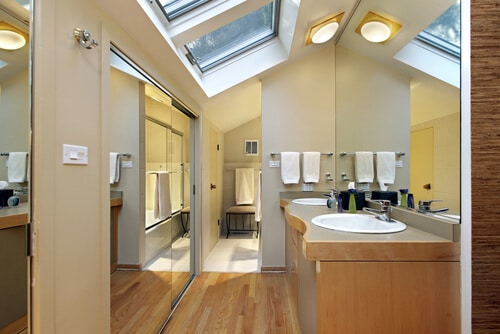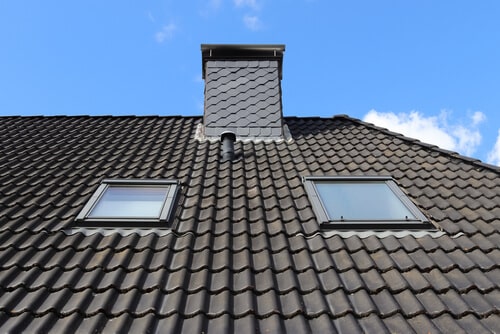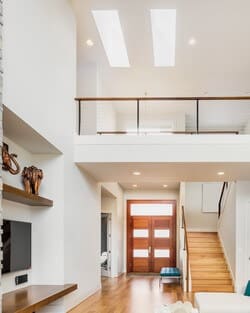What are Skylights?
Essentially, a skylight is a window installed on your roof. While the definition might be simple, the installation process is more complex than installing a window on a wall. Though, unlike regular windows, skylights offer much more natural light to not only brighten up any dark room in your home but also make smaller rooms appear larger while increasing ventilation.
But let’s not forget, a skylight can make a huge stylistic statement and enhance the ambiance of your home. Whether you want a skylight in your bedroom to gaze at the night sky or one in your bathroom to create the ultimate sanctuary space for relaxation, skylights can easily transform the look and feel of your home—while simultaneously increasing your home’s value




